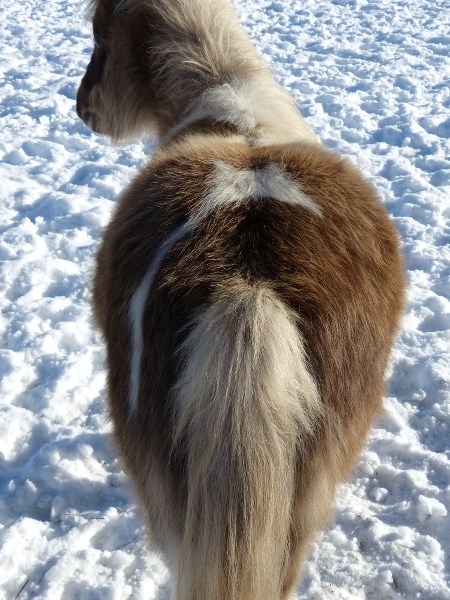In the past two months we have experienced a wide variety of winter weather conditions with temperatures ranging from 6C to -28C – yikes!
This does present some challenges for winter horse management. In a previous column, I discussed the requirements for your horse to be able to handle our Alberta winters but, the question is, is your program working? Is your horse in the condition he should be? How do you tell?
One thing to look at is his attitude – is he actively moving around, is he interested in his surroundings? A horse that is not feeling good is often lethargic, doesn’t move much, keeps his head hanging low, often isolates himself from the group. These are all warning signs that something is not right.
The next thing to look at is his body condition. In the winter, our horses have thick, protective coats but these coats may be hiding the true physical condition of your horse. He might be too skinny under all that hair, or he might be too fat and heading for other problems.
You have to actually put your hands on your horse to feel his body and determine his condition. A tool you can use to determine his condition is Body Condition Scoring – a scoring system based on observations of various parts of your horse’s body.
One resource is agric.gov.ab.ca.
The scoring system is a nine point scale that helps you determine body condition based on look and feel.
Essentially, you look at or feel several areas: along the neck, along the withers, crease down the back, tailhead, over the ribs and behind the shoulder.
The condition of your horse is based on the body fat in these areas.
Horses develop body fat in a predictable pattern so monitoring these areas will give you an accurate appraisal of condition.
Your horse is getting too fat if you observe a slight crease down the back, the fat over the ribs feels soft and spongy, the fat around the tailhead feels soft and you feel/see fat beginning to be deposited along the sides of the withers, behind the shoulders and along the sides of the neck. You are not being kind to your horse by overfeeding as an overweight horse is headed for an assortment of health problems – some of which can be life altering.
The other side of winter weight is being too skinny. Signs include a ridge along the back, ribs are discernible (you can see them), tailhead has lost the surrounding fat, hip bones starting to show, withers, shoulders and neck appear thinner and you can start to feel the bones underneath. Heavy winter hair can hide a lot of this so it is important to actual feel your horse.
You may need to adjust your feeding program based on the weather conditions at the time. In severe weather, the horses will need more forage (hay) to help maintain their bodies but you should drop it back when the weather moderates. It is the additional forage that helps the horses cope with extreme conditions – not concentrates and supplements.
Keep in mind that you should be feeding based on weight, not volume. For a normal horse, the total feed intake should be about two per cent of their body weight per day.
If your horse is getting more or less than that and you observe a body condition problem, then you may have to modify how your horse is getting his feed – perhaps feed him separately from the other horses if he is not getting his appropriate share.
An overweight horse who is high in the “pecking order” might be eating his share as well as some of the other horses’ portions leaving some of them underweight due to insufficient feed.
Only monitoring the body condition of all the herd members will indicate whether there is a problem or not.




